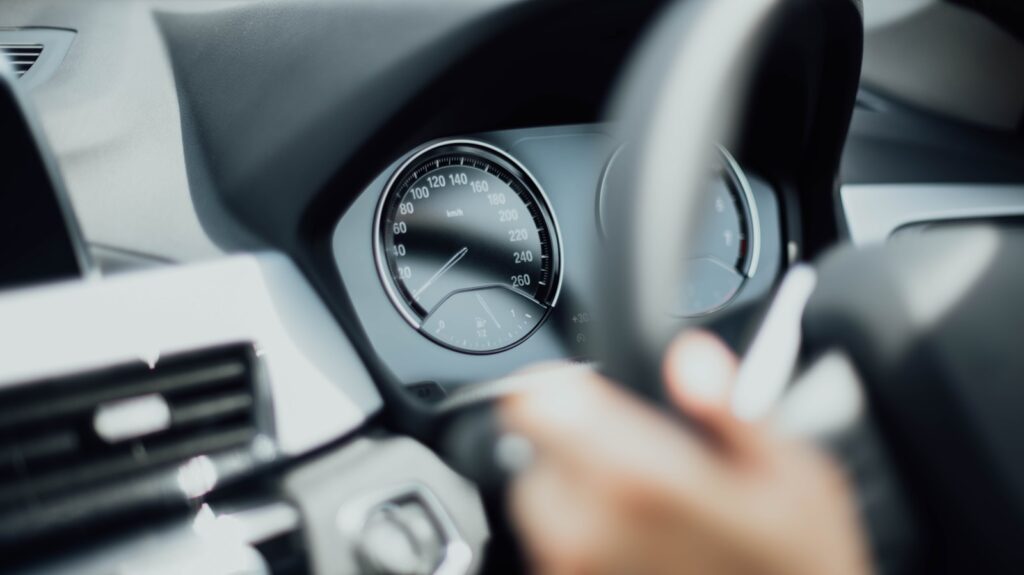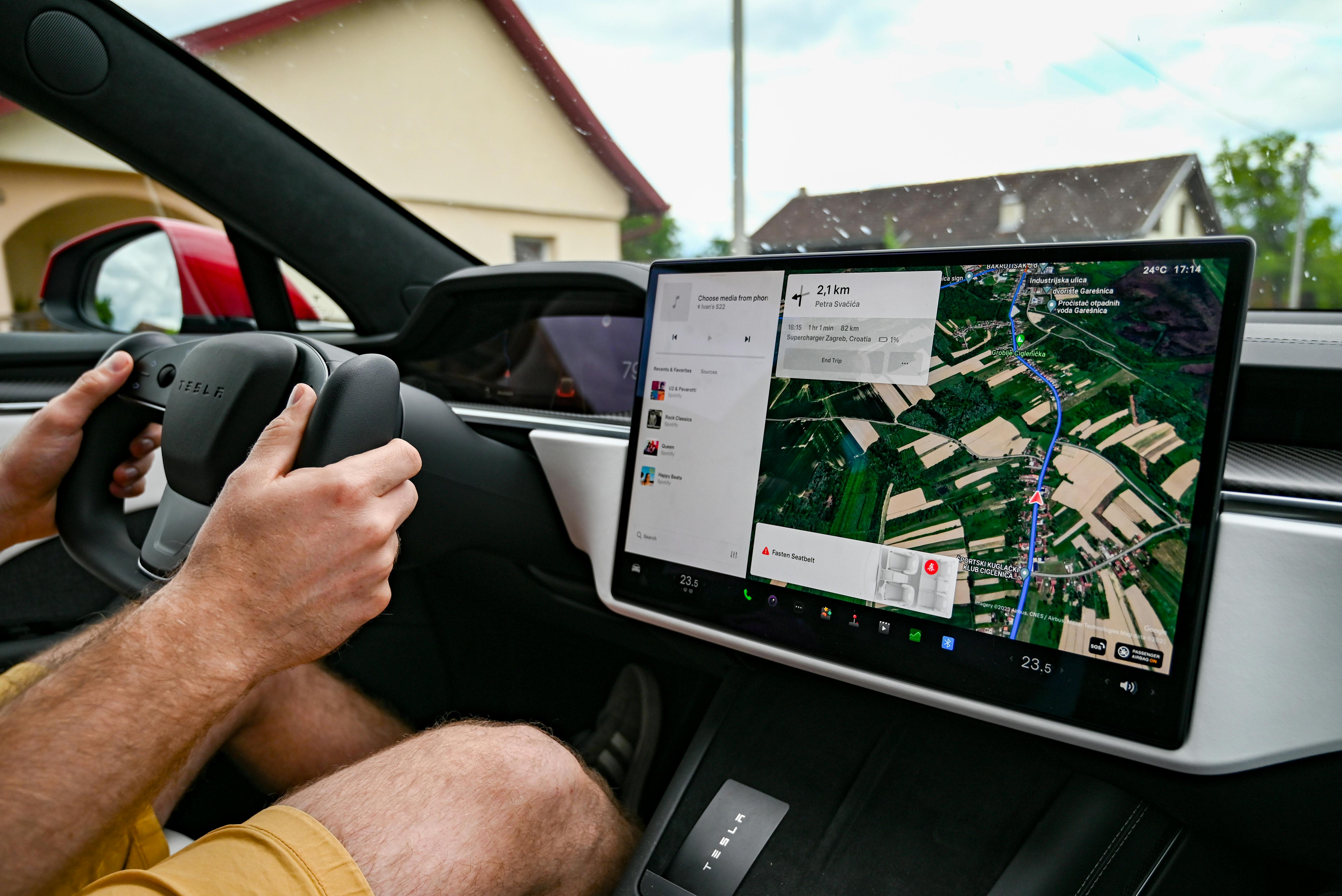
In an increasingly connected world, where smart devices permeate every aspect of our lives, it might come as a surprising revelation to many that our cars, once simple machines of transport, have quietly evolved into sophisticated data collection hubs. These modern vehicles, equipped with an array of sensors, software, and internet connectivity, are amassing a vast treasure trove of personal information about us – our routes, our driving style, and even our habits. This extensive collection goes far beyond what most drivers imagine, often without their explicit or easily discernible consent.
Recent investigations and reports have cast a stark light on this emerging frontier of digital surveillance. A New York Times article, for instance, highlighted how General Motors, among other automakers, was sharing intricate driving data with insurance companies, sometimes to the detriment of unsuspecting drivers who found their premiums inexplicably hiked. This practice underscores a broader, more systemic issue: the opaque nature of vehicle data collection and its subsequent disclosure to third parties, raising significant questions about privacy, consent, and the digital footprint we leave with every mile driven.
Understanding precisely what data your car is collecting, why it’s being collected, and with whom it’s being shared is no longer a matter of mere curiosity but a critical component of safeguarding one’s digital privacy. The implications stretch across various facets of our lives, from personalized advertising to the very cost of our car insurance. Let us delve into some of the fundamental ways car manufacturers are tracking our driving habits, revealing the hidden layers of data capture that define our modern automotive experience.

1. **Diagnostics and Vehicle Health Data: The Car’s Internal Report Card**One of the most foundational categories of data that modern vehicles diligently collect is diagnostic or “vehicle health data.” This information is akin to a comprehensive internal report card for your car, monitoring its operational parameters, system performance, and overall well-being. From engine temperatures and fluid levels to the functioning of various electronic components, this data stream is constant and voluminous, providing a real-time pulse on the vehicle’s condition.
The primary, and perhaps most unsurprising, purposes for collecting this diagnostic data are rooted in quality assurance, research, and product improvement. Automakers utilize this stream to identify common issues, track potential recall scenarios, and refine future vehicle designs. It also plays a crucial role in enhancing customer service, enabling dealers and repair companies to more efficiently diagnose and address service issues when a vehicle is brought in for maintenance. This internal use is often presented as a benefit to the consumer, contributing to safer and more reliable vehicles.
However, the scope of sharing for this data extends beyond just internal company departments. It may be routinely shared with affiliated entities such as dealers or authorized repair companies to facilitate specific service needs. While this can streamline the repair process, it also means that a network of entities beyond the manufacturer itself gains access to granular details about your car’s operational history, adding another layer to the data ecosystem surrounding your vehicle.
The collection of diagnostic data, while often framed as essential for vehicle performance and safety, represents the initial layer of information gathering. It establishes a precedent for cars acting as self-reporting entities, laying the groundwork for more personal data collection. The crucial distinction lies in whether this ‘health data’ remains confined to the car’s well-being or begins to overlap with insights into the driver’s habits and usage patterns, which it increasingly does.
Read more about: No More Guesswork: Unmasking 10 Critical Car Hacking Threats and Smart Strategies to Stay Secure on the Road
2. **Precise Location Information: Tracing Your Every Journey**Perhaps one of the most significant and widely collected pieces of personal information by modern vehicles is location data. Equipped with sophisticated GPS systems and cellular connectivity, cars are continuously logging their geographical positions, often with remarkable precision. This tracking can occur in the background, whether you are actively using a navigation system or not, building a detailed mosaic of your travel history over time.
Automakers and connected services frequently cite several beneficial purposes for this pervasive location tracking. Foremost among these are emergency services, where accurate location data can be critical in dispatching assistance following an accident. Mapping and navigation systems rely inherently on this information to guide drivers. Furthermore, cars may collect other environmental information about where they are operated, contributing to broader datasets about road conditions, traffic patterns, and infrastructure quality. Some car apps even offer drivers direct access to their vehicle’s location, touting convenience and security benefits.
Despite these advertised benefits, the collection of precise location data carries substantial privacy implications. A car’s location history can reveal intimate details about a driver’s life: where they live, work, frequent, and even places that might be considered sensitive. When this data is stored over long periods or shared with third parties, the potential for misuse or unwanted scrutiny becomes considerable. It forms a digital breadcrumb trail that can be far more revealing than many realize.
Moreover, location information is a highly valuable asset within the targeted advertising ecosystem. When combined with other usage data, your daily driving routes and destinations can provide advertisers with deep insights into your lifestyle and preferences, enabling them to push highly personalized promotions. This transformation of basic navigational utility into a marketing tool exemplifies the commercial value automakers derive from the data they collect, extending its purpose far beyond simple vehicle operation.
Read more about: Unleash Your Inner Engineer: Top 14 Crate-Build Cars You Can Assemble Today

3. **Usage Data for Targeted Advertising: Monetizing Your Daily Drives**Beyond just knowing where your car is, manufacturers are increasingly interested in *how* you use it, particularly for the purposes of targeted advertising. This involves collecting various forms of “usage data” that, when analyzed, can paint a surprisingly detailed picture of your daily routines and preferences. This data becomes a valuable commodity, contributing directly to the burgeoning behavioral advertising industry.
The types of usage data collected for advertising are broad, encompassing details about your daily driving habits and even car maintenance routines. For instance, patterns in your commute, the types of roads you frequently use, or even the regularity of your service appointments can all be logged. When this information is correlated with your location data, as discussed previously, it creates a powerful profile that can be highly attractive to advertisers looking to reach specific demographics with pinpoint accuracy.
Automakers, like many other tech companies, are deeply entrenched in an economy where data is currency. Your driving patterns are no longer just about getting from point A to point B; they are data points that can be monetized. This means that decisions you make on the road, from how often you drive to how well you maintain your vehicle, can indirectly inform advertising algorithms, leading to a tailored — and often intrusive — stream of ads across your digital landscape.
The challenge for consumers is the sheer opacity of this process. The context explicitly states that “like the rest of that industry, it’s nearly impossible to track exactly where your data goes and how it’s used.” This lack of transparency means drivers are largely unaware of the extent to which their automotive activities are contributing to advertising profiles, leaving them with little control over the destiny of their personal information once it leaves their vehicle.

4. **Broad Data Sharing with Law Enforcement: When Your Car Becomes a Witness**A critically important, yet often overlooked, aspect of car data collection is the potential for sharing all of this information with law enforcement agencies. Modern vehicles are essentially mobile data recorders, and as such, the information they collect, regardless of its original intended purpose, can be accessed and utilized in legal investigations. This capability transforms your car from a private space into a potential witness, or even an informant, in unforeseen circumstances.
One prominent example that illustrates this potential unfolded with a Tesla Cybertruck that tragically burned outside the Trump International Hotel in Las Vegas. Law enforcement officials investigating the incident publicly thanked Tesla for quickly providing data about the suspect. Sheriff Kevin McMahill specifically lauded Elon Musk for supplying “quite a bit of additional information,” including video from Tesla charging stations, which aided their efforts to track the driver. This demonstrates a clear precedent for automakers to cooperate with authorities, often providing data rapidly when requested.
While law enforcement praises this corporate assistance as invaluable for investigations, it simultaneously ignites significant concerns among privacy advocates. The vast amount of information collected – where you’ve been, how fast you drive, even what you look like via internal cameras – could, without appropriate limits, lead to severe privacy invasions. The core worry is that automakers possess a “treasure trove” of information, and its accessibility to authorities, without stringent safeguards, erodes individual liberties.
This aspect highlights a fundamental tension between public safety and personal privacy. When a car is capable of recording so much, and that data can be easily handed over to authorities, the implications for surveillance become profound. The question isn’t just about what the car collects, but who gets to see it, under what circumstances, and with what level of transparency to the driver. This potential for widespread data access by law enforcement is a powerful reminder of the pervasive nature of automotive data collection.

5. **Driving Habits Data for Insurance Risk Assessment: The Cost of Your Commute**Perhaps one of the most direct and financially impactful ways your car tracks your habits is through the collection of “Driving data” or “Driver behavior information” specifically for insurance companies. This category of data goes beyond basic diagnostics to scrutinize the nuances of how you operate your vehicle, directly influencing your insurance premiums.
The parameters collected are quite comprehensive. They can range from simple odometer readings, which indicate mileage, to far more granular details about your driving style. This includes statistics on hard braking and rapid acceleration events, which are often interpreted as indicators of aggressive or risky driving. Even the time of day you typically drive can be logged and factored into risk assessment, as certain hours may be perceived as more hazardous for accidents.
The thrust of recent investigative reporting, like that in The New York Times, has focused squarely on this “surprise insurance sharing.” Many drivers have been shocked to discover that their seemingly private driving data has been secretly relayed to data brokers, who then compile risk profiles for insurers. These profiles can then lead to significant alterations in insurance rates, often without the driver’s explicit knowledge or understanding of the data’s origin.
It is important to note the landscape of telematics data for insurance rating. Every state in the U.S., with the sole exception of California, currently permits the use of telematics data for setting insurance premiums. However, privacy protections for this data vary widely across different states. This fragmented regulatory environment leaves many drivers vulnerable to having their habits monetized and judged by insurers, often in ways they haven’t consciously agreed to.

6. **Opt-In Usage-Based Insurance Programs: The Explicit Trade-Off**While much of the concern around car data focuses on covert collection, there are also more transparent mechanisms through which driving data is shared with insurance companies. These are typically “usage-based insurance programs” where customers explicitly opt-in, usually in exchange for a potential discount on their premiums. These programs represent a clear, though not always perfectly understood, trade-off between privacy and cost savings.
When a consumer signs up for such a program directly through an insurer, the process is usually quite straightforward. They are informed about the data collection and its purpose, and they consent willingly. Often, these programs involve the insurer sending a physical device, commonly referred to as a “dongle,” that plugs into the car’s On-Board Diagnostics (OBD) port. This device then collects and transmits specific driving data back to the insurance company.
The data collected by these dongles can be extensive, mirroring many of the driving habit metrics collected internally by cars: mileage, speed, braking patterns, and acceleration. The intent is to provide insurers with a real-time, behavioral assessment of a driver’s risk profile, theoretically allowing for more personalized and potentially fairer premiums. For some drivers, the financial incentive of a discount outweighs the privacy concerns associated with constant monitoring.
However, even with these “clear” opt-in programs, the nuances of data usage can still be complex. While drivers understand they are being monitored, the specific algorithms used to interpret their driving behavior and the exact impact on their premiums might not always be fully transparent. Nevertheless, these programs stand in stark contrast to the less obvious methods of data sharing, representing a scenario where the driver has a more direct, albeit still often technical, understanding of the exchange.

7. **Internal Car Systems for Covert Insurance Data Sharing: The Hidden Agreement**Beyond explicit opt-in dongle programs, a far more insidious method of data sharing with insurance companies has emerged: internal car systems that can piggyback off a smartphone app or the car’s own internet connection. This form of data collection and sharing often operates behind a veil of “dense legalese,” making it incredibly easy for drivers to “accidentally ‘agreed’ to such sharing without realizing it.”
This phenomenon frequently occurs during the car purchasing process. In the whirlwind of excitement and exhaustion that often accompanies completing a gauntlet of finance and legal forms at a dealership, drivers may inadvertently consent to data sharing terms buried deep within privacy policies or user agreements. The context explicitly notes that salespeople can even receive bonuses for successfully enrolling customers in connected services, including those that share driving data.
Automakers employ varying terminology for these programs, adding to the confusion. While some, like Toyota’s “Insure Connect,” are somewhat transparently named, others are much more obscure. Honda, for example, reportedly tucks information about sharing with data brokers (who then share with insurers) within a privacy policy after its “Driver Feedback” feature is enabled. Similarly, services like G.M.’s OnStar, Subaru’s Starlink, and Volkswagen’s Car-Net, often associated with safety or theft prevention, can also include an opt-in for insurance data sharing.
This stealth enrollment mechanism is particularly troubling because it undermines the very concept of informed consent. Drivers like Kenn Dahl, who discovered 130 pages of his driving data shared by G.M. with LexisNexis, felt a profound “betrayal,” as they had no clear recollection or understanding of having opted into such a program. This opaque practice allows automakers to collect vast amounts of driving behavior data from millions of Americans, turning what was once a private activity into a valuable commercial asset without the average consumer’s full awareness.
” “_words_section1”: “1997
In our connected world, cars have transformed into sophisticated data hubs. Beyond diagnostics, they track routes, driving styles, and habits, often without explicit consent. This section explores obscured data acquisition, third-party sharing, privacy implications, and actionable steps consumers can take to control their automotive data footprint.

8. **Biometric Data Collection: Your Car’s Eyes and Ears**Some modern vehicles actively collect biometric data through integrated microphones and cameras. These features capture intimate details like your voice and facial features, raising substantial privacy concerns. Automakers often frame this as enhancing safety or convenience, but potential for misuse is clear.
Hyundai and Kia use voice recognition systems, sharing this data with specialists like Cerence. While intended for improved interfaces, the sensitivity of voice data sparks questions about its storage and secondary uses. Tesla collects both voice commands and short video clips from in-car cameras for self-driving system refinement, increasing privacy risks concerning access and storage.

9. **The Data Broker Ecosystem: Your Driving Habits on the Market**Your vehicle data often extends beyond the manufacturer, entering a shadowy ecosystem of third-party data brokers. These companies aggregate information from automakers, then repackage and sell it, notably to insurance providers. This opaque web makes tracking data flow “nearly impossible,” due to pervasive lack of industry transparency.
General Motors, for example, sold driving data to third-party companies, who then sold it to insurers. This practice, sparking backlash, shows your commute as a valuable commodity traded without clear consent. Data brokers like LexisNexis Risk Solutions and Verisk are central, creating detailed risk profiles from millions of drivers’ behaviors.
LexisNexis’ “Telematics Exchange” facilitates “sharing consumer-approved connected car data with insurers,” boasting “real-world driving behavior” from “over 10 million vehicles.” Verisk similarly claims access from millions, citing partnerships with Ford, Honda, and Hyundai. While entities assert “appropriate consents,” it’s often buried in “fine print and murky privacy policies.”

10. **Hidden Costs of Data Collection: Impact on Insurance Premiums**Automotive data collection directly impacts car insurance premiums. While explicit opt-in programs exist, covert sharing through car systems or brokers causes “surprise insurance sharing” and unexpected rate hikes. This hidden cost underscores the critical need to comprehend your vehicle’s data ecosystem.
Insurers and data brokers meticulously assess parameters from “odometer readings to braking and acceleration statistics.” “Hard braking and rapid acceleration” are often flagged as risky. Kenn Dahl’s premiums rose 21 percent after LexisNexis provided 130 pages of his driving data, showing how granular information alters financial landscapes.
Fragmented regulations complicate this. “Every state except California currently allows telematics data for insurance rating,” but “privacy protections… vary widely.” This patchwork leaves many drivers vulnerable to having habits monetized and judged without full understanding, exacerbated by “legalese-filled policies.”
11. **Understanding Your Vehicle’s Data Profile: Tools for Discovery**Given the opaque nature of car data collection, a critical first step for any driver is to understand what information their vehicle gathers and how it’s used. Fortunately, resources are emerging to demystify this complex process, providing much-needed clarity. These tools are invaluable for uncovering your car’s digital footprint.
A highly recommended starting point is Privacy4Cars’ Vehicle Privacy Report. By entering your car’s VIN, this platform offers a “rough idea of what sorts of data your car collects,” providing a personalized snapshot. This assessment begins to dismantle corporate secrecy, offering a foundational understanding of your car’s digital behaviors.
In parallel, consult broader investigative reports on car manufacturer practices. Mozilla’s “Privacy Not Included” site offers comprehensive analyses of various car brands’ privacy policies. These reports provide an overview of industry trends, allowing consumers to gauge their manufacturer’s privacy posture.

12. **Navigating In-Car Privacy Settings: Apps and Infotainment Systems**Once you understand your vehicle’s data collection capabilities, actively manage privacy settings within your car’s connected apps and infotainment system. Diligently scrutinize menus and options to limit unwanted data sharing. Manufacturers often embed these controls across digital interfaces, necessitating careful search.
If using a car app, delve into its settings immediately for “Data Privacy” or “Data Usage” options. “Opt out of sharing any data with third-parties, or for behavioral advertising” whenever presented. This reduces information flow. Disabling phone ad tracking is a wise accompanying measure. Exercise caution: “not accidentally disable something you want, like a car’s SOS feature.”
Pay close attention to “driver scoring or feedback option” in your car’s app and infotainment. Programs like “Insure Connect,” “Driving Score,” or “Smart Driver” frequently share data with insurers. Disabling these features, or meticulously reviewing their terms, is critical. Mozilla warns “opting out of certain data sharing might someday make the car undriveable.”
13. **Exercising Your Right to Know: Filing Privacy Requests with Automakers**To uncover your car’s full data collection scope, formally file a privacy request directly with the manufacturer. This allows you to legally demand a copy of exact personal information collected, transforming abstract concerns into concrete data. While some automakers comply voluntarily, these requests are potent for residents of states with robust consumer data privacy laws.
In states with such legislation, consumers possess a “right to know” or “right to access” their data, compelling companies to provide a copy. Some laws also guarantee “data portability,” ensuring you receive data in a machine-readable format for easier analysis. The IAPP publishes a list of states with these crucial laws, empowering residents to exercise their rights effectively.
The process involves visiting the car manufacturer’s privacy request page, looking for options to “get a copy of your data” and “ask them to stop sharing it.” These often require separate forms. Many major automotive brands, including those like GM, Toyota, and Honda, maintain dedicated portals. Even without explicit state laws, submitting a request “doesn’t hurt to ask anyway.” After filing, watch your inbox for confirmation; detailed data arrives within 45 to 90 days.

14. **Reclaiming Your Data: Deleting Information from Car and Brokers**The ultimate act of digital sovereignty involves deleting information from both your car and the data brokers profiting from it. This is essential, especially when selling or trading a vehicle, or if concerned about persistent digital traces leading to “identity theft or unauthorized access.”
Begin with data brokers. LexisNexis and Verisk are prominent companies aggregating and selling car data to insurers. It is vital to “request your data from data brokers known to hand car data to insurers.” Similar to automakers, you have the right to request access, and in some jurisdictions, deletion or to opt-out of its sale. This directly targets the third-party data sharing problem.
For data residing within your vehicle’s infotainment and telematics systems, Privacy4Cars is a crucial resource. This platform offers “detailed guidance on removing sensitive information from vehicles,” with “comprehensive instructions covering a wide range of vehicle brands and models.” Privacy4Cars guides cover “Clearing Navigation Histories,” “Removing Paired Devices,” and “Disabling Connected Services.” Indeed, “no one has done more work in testing and documenting vehicle data collection, retention, and how to delete it” than Privacy4Cars.
Read more about: The Smartest Ways to Protect Your Online Privacy in 2025: An Essential Lifehacker’s Guide
In a world where cars are data-gathering machines, digital privacy is challenging, requiring vigilance. From biometric sensors to invisible data brokers, the automotive industry presents profound privacy implications. Yet, drivers are not powerless. By leveraging discovery tools, navigating settings, exercising rights, and deleting traces, individuals can reclaim control. The path forward demands individual action and a collective call for stronger legislation, ensuring connected car convenience doesn’t cost fundamental digital liberties. This dialogue will ultimately shape future automotive privacy.







